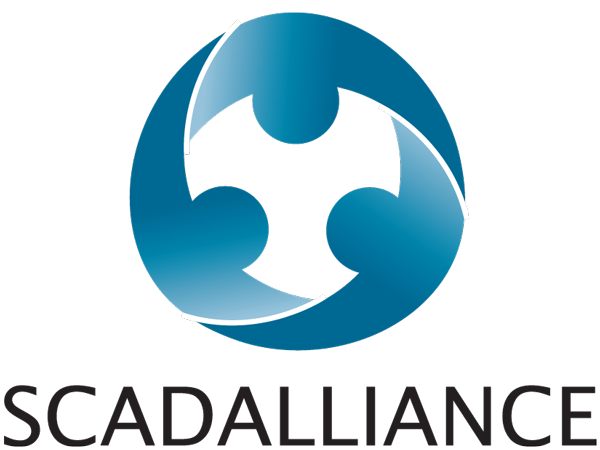Telemetry - Remote Management
Telemetry - Remote Management
DEFINITIONS
Telemetry, Remote maintenance, Remote management, but also Remote monitoring, Telecontrol, Remote operation, Remote alarming, Telemetering, Remote meter reading, etc. These are all concepts that are not always easy to distinguish.
As all these terms concern communication and transmission of information to remote installations, and sometimes cover certain common functionalities, it is useful to establish a classification to know more precisely what we are talking about and to identify the services rendered by each type of system.
- TELEMETRY
A telemetry system is primarily intended for taking measurements and is therefore essentially associated with sensors; in particular, it does not involve any action on equipment.
It can be used, for example, for pressure monitoring systems on drinking water distribution networks, overflow detection for overflow structures, river level monitoring; but the same term will be used in the medical field for monitoring vital parameters in patients under observation, or in the monitoring of bridge structures.
Tele-metering and remote meter reading applications can be considered as specific telemetry applications, the measured quantities being in this case volumes, operating times, number of passages, etc.
The data acquired by telemetry or tele-metering systems are primarily used for monitoring over time (trends), analysis (reports) and possibly billing purposes; critical telemetry applications may also include alert functionalities.
The vast majority of IoT offerings available today are essentially Telemetry offerings.
- REMOTE SURVEILLANCE
This term is primarily attributed to security-related systems commonly used by access control, video surveillance or fire safety professionals. Remote surveillance equipment is often managed by specialized service companies ("security companies"), equipped with 24-hour reception centres and security teams that travel to the sites on alert.
The notion of remote alarming or alarm notification is quite similar, although it includes all systems whose primary objective is to alert operators for intervention; the nature of these alarms can be of a security nature (intrusion into a building) as well as a technical nature (pump failure).
- REMOTE MAINTENANCE
The primary objective of a remote maintenance system is to maintain the installations in good working order. It is mainly a question of having the tools to diagnose and resolve (remotely) equipment malfunctions.
If this term is used a lot in the computer world, with in particular the very widespread software of remote control of computers, it also applies completely to the field of the remote maintenance of industrial equipment; this one became today an essential tool for many manufacturers wishing to offer to their customers reactive and less expensive breakdown services, in order to limit the times of stop or fall of production.
In the industrial world, it is often a question of intervening on control and supervision systems (PLCs, robots, SCADA systems, etc.), including the access to the internal programs of these systems.
- TELECONTROL
Telecontrol is a very distinct field from the previous ones, since it is above all about the operation of installations.
A telecontrol system also integrates measurement and alarm services, and possibly metering services, but its primary function is to allow interventions on the equipment controlling the operation of the installations (pumps, circuit breakers, etc.). The measurements and alarms acquired by the systems are used here, above all, to guide and determine the actions necessary for the safety or optimization of the installations (shutting down a pump, increasing a control set point, electrical load shedding, etc.)
The term Telecontrol is particularly used in the energy sector (production facilities and electricity and gas transport and distribution networks). But it also applies to the remote operation of drinking water production and distribution facilities, and wastewater collection and treatment installations.
Telecontrol systems naturally include Telecommand and Remote setting functionalities, which refer to the actual actions on the equipment, via PLCs, controllers, regulators...
- REMOTE MANAGEMENT
Remote Management can be considered as the term that certainly groups together the different concepts mentioned above. Indeed, managing an installation requires both:
— monitoring its proper functioning, having indicators and performance reports (Telemetry, Tele-metering),
— detecting, diagnosing and quickly resolving any malfunction or drop in performance (Remote alarming, Remote maintenance),
— to control and regulate at the optimum the control equipment (Telecontrol).
SOME EXAMPLES OF THE SCADALLIANCE OFFER
- TELEMETRY, TELE-METERING, REMOTE METER READING
See our range of battery powered Data loggers, which are above all telemetry equipment, even if some of them can integrate one or two outputs for generally very rudimentary control functions.
- REMOTE MONITORING, REMOTE ALARMING
See in particular the Redy PLCs which integrate the management of access control and video surveillance systems, without however being as specialized as some systems totally dedicated to these services.
However, one of the important advantages of Redy is that it can combine technical management and security management of installations in a single system.
- REMOTE MAINTENANCE
See the Cosy and Flexy products from eWON/HMS which have acquired a widely recognized dominant position in this field in the industry.
- TELECONTROL, REMOTE MANAGEMENT
See the Redy and Flexy products which can offer all the remote management services mentioned.
In the case of Flexy, the actual control functions will generally be entrusted to external equipment (PLCs, controllers), but the supervision of these functions will be fully accessible through Flexy.
- CENTRALIZED MANAGEMENT SOLUTIONS
In all cases, the solutions can also include tools for centralized management of a set of installations equipped with this "field" equipment. See our offers in software and Cloud operating platforms (TopKapi, Talk2M, DataGate, Trimble Unity…).
These tools can also be associated with various specialized software, such as Geographic Information Systems (GIS), CMMS or Predictive Maintenance software, invoicing software, etc.


